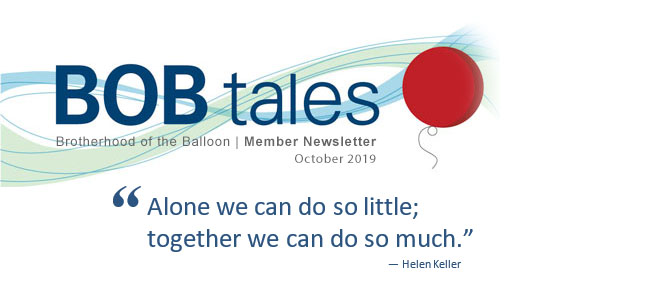
Dear Members (a note from Deb Hickey):
In this important opening memo, we report on a potential health policy issue that could affect all of us. Please read it carefully. Thank you.
Last month, the Center for Medicare and Medicaid Innovation (CMMI) proposed a new payment model for radiation oncology services. This mandatory model for those on Medicare would result in beneficiaries receiving reimbursement for proton therapy at the same national base rate as all other radiation modalities (including IMRT and brachytherapy). To be clear, Medicare is proposing a huge change to their coverage for proton therapy—and it’s not good. If this new proposed rule is approved, Medicare will no longer cover proton therapy as it has in the past. Rather, it will cover the same amount for proton as it does for any other radiation treatment, reducing coverage levels by roughly 50 percent.
What does this mean?
It means that CMMI is not accounting for the higher cost of building proton treatment centers and delivering proton beam therapy or the long-term value of proton therapy in reducing costly side effects and secondary malignancies during a patient’s lifetime. They are grouping proton therapy with all other radiation treatments, creating a dramatic cut in reimbursement rates for hospitals and free-standing centers that provide proton therapy.
What could happen?
If this proposed payment model goes through, some hospitals may stop treating with proton therapy; some centers could close; and development of new proton centers could be threatened. This wouldn’t just jeopardize access for Medicare beneficiaries; it would threaten access to proton therapy for other patients, including children. Furthermore, this new rule would not only discourage the use of proton therapy in general, it would negatively affect proton therapy research and the development of other emerging cancer treatment technologies.
What are we doing about it?
On Sept. 16, the National Association for Proton Therapy and other supporters submitted comment letters to the Centers for Medicare and Medicaid Services, which outlined their objections and concerns. They also provided recommendations on how to ensure this payment model won’t limit access to proton therapy for cancer patients.
How can we help?
From now through mid-November, the National Association for Proton Therapy (NAPT) is asking proton centers, technology partners, and patient advocacy groups (that’s us) to assist them with their congressional advocacy plan. I will send an email to our members, and others on our newsletter distribution list, to ask for your help contacting congressional leaders with emails, letters, and/or phone calls to ask them to reconsider this new model. We encourage you to forward the email to friends and family as well.
Within the next day or two, we’ll send specific instructions and information on contacting congressional leaders. Please look out for the email. We expect a significant response by our members; we expect to get the attention of CMMI and congressional leaders; and we hope and expect to influence a change in direction.
I’m confident that together we can ensure proton therapy remains an option for those with prostate cancer and many other cancers. Thank you, in advance, for your support.
In this issue, you’ll learn how participating in a clinical trial may help with insurance reimbursement for proton therapy; find out why ex-fighter pilots are pushing for early cancer screenings; learn one important key to helping with side effects from ADT; read a raw account on the horror of receiving a prostate cancer diagnosis written by a urological surgeon that will probably surprise you; and see what a Mediterranean Diet might just help reduce the risk of developing advanced prostate cancer. There’s a lot more, too.
As always, we hope you enjoy this issue of BOB Tales. If you have feedback or questions, please send me an email—I’d love to hear from you.
Deb Hickey
To print the BOB Tales newsletter or view the newsletter with a larger font size, click here for the PDF file.
In this Issue:
- Participating in Clinical Trials May Help with Reimbursement
- Higher Rate of Prostate Cancer with Pilots?
- One Key to ADT Side Effects
- Prostate Cancer Treatment – A Surgical Perspective
- New Study: Following this Diet May Help Prevent Aggressive Form of Prostate Cancer
- Breast Cancer: Proton Therapy’s Potential
- 5 Foods that Help Fight Prostate Cancer
- New Research Provides Insight into Why Broccoli Reduces Prostate Cancer Risk

Participating in Clinical Trials May Help with Reimbursement
While Medicare continues to cover proton therapy for prostate cancer, patients have been fighting the battle of private insurer coverage denials for several years. Some of those who choose to appeal their denials are winning their cases, but it’s a tough challenge, one that many aren’t willing to take on.
We’ve written about several initiatives that are under way to turn around private insurer denials. These include a National Association for Proton Therapy (NAPT) subcommittee initiative; proton centers establishing support systems to help patients with appeals; two important clinical trials under way comparing proton therapy to IMRT for treating prostate cancer; and the formation of the Proton Therapy Law Coalition with several class action lawsuits under way. We’re happy to report that progress is being made on all fronts.
 Over the past few weeks, there’s been a new development. Some patients have informed us that private insurers that denied coverage in the past seem to be receptive to approving proton therapy reimbursement if the patient is participating in a clinical trial. Last month we heard from a member who was denied coverage by Aetna for proton treatment at UFHPTI. To his surprise, he learned that Aetna decided to cover his treatment because he was enrolled in the PARTIQoL clinical trial. His proton therapy began last month and he’s one happy camper.
Over the past few weeks, there’s been a new development. Some patients have informed us that private insurers that denied coverage in the past seem to be receptive to approving proton therapy reimbursement if the patient is participating in a clinical trial. Last month we heard from a member who was denied coverage by Aetna for proton treatment at UFHPTI. To his surprise, he learned that Aetna decided to cover his treatment because he was enrolled in the PARTIQoL clinical trial. His proton therapy began last month and he’s one happy camper.
We can’t say for sure that all major private insurers will cover proton therapy if the patient is enrolled in a clinical trial, but it does appear that some will. We’ll attempt to gather more information on this and present it in future BOB Tales.
Keep in mind that participating in some clinical trials, such as COMPPARE, allows you to make your own treatment decision, which includes the standard treatment protocol. All they ask is that you periodically report back on how you’re doing, by filling out forms relating to quality of life after treatment. They often provide some modest financial compensation for your participation.
We’re hopeful that through the above initiatives and ongoing clinical trials, insurance denials for proton therapy will soon be a thing of the past. Stay tuned.
Higher Rate of Prostate Cancer with Pilots?
Military.com recently published an article in the McClatchy Washington Bureau, titled, “ ‘We Are Dropping Like Flies.’ Ex-Fighter Pilots Push for Earlier Cancer Screenings.”
Former military pilots (Air Force, Navy) are asking for cancer screening for aviators as young as 30 because of an increase in deaths from cancers that may be related to exposure to ultraviolet and ionizing radiation from radar systems or other sources during flight.
Air Force Col. Eric Nelson, a former F-15E Strike Eagle weapons officer, said, “We are dropping like flies in our 50s from aggressive cancers,” and he cited prostate, esophageal, lymphoma and glioblastomas. Nelson’s own prostate cancer was diagnosed at age 48.
 A new Air Force study showed the rate of prostate cancers among veterans has risen almost 16 percent since 2000.
A new Air Force study showed the rate of prostate cancers among veterans has risen almost 16 percent since 2000.
The military currently covers prostate cancer screening at age 50 for military personnel and at age 40 if there is a family history of the disease.
One study by the American Association for Cancer Research reported that cancer rates among service members were twice those in the general population, with breast cancer rates 20 to 40 percent higher. But a study published in Aviation, Space and Environmental Medicine (ASEM) reported no significant differences in prostate cancer rates between pilots and non-pilots in the military. Challengers to this latest study claim that it looked at only short-term data. “If they are really going to protect the people who have gone out and served, they need to look at the guys’ health 20 years after they have finished their military careers, said retired Navy Cmdr. Thomas Hill, a career F-4 and F-14 pilot, who was diagnosed with a brain tumor at age 52. His own informal survey showed that cancers usually surfaced 15 to 20 years after pilots left the military. These cancers wouldn’t have been reported in the ASEM report.
As we look at our BOB member list, it does appear that we have a disproportionately high number of pilots (former Navy, Air Force and commercial pilots) relative to the population as a whole. Further studies by the U.S. military are under consideration.
One Key to ADT Side Effects
In addition to temporary loss of libido (sex drive), men often complain about other disheartening side effects from hormonal therapy including hot flashes, breast enlargement, and body hair loss.
One of our members, a friend of Bob’s, has always made vigorous exercise an important part of his life. When diagnosed with moderately aggressive prostate cancer, his doctor prescribed Androgen Deprivation Therapy, Lupron injections in this case, along with his proton therapy. When asked how he’s tolerating the Lupron a year after starting this treatment, he replied, “A lot of people complain about Lupron, but they don’t exercise. If you exercise the way I do, the main irritants are: Loss of sex drive, some fat retention, and hot flashes that can’t be avoided, but are easily tolerable and not too frequent.”
Certainly, different patients can have different reactions to hormonal therapy. But, based on feedback from hundreds of members over the years, those who exercise regularly, almost always report to us that their side effects from hormonal therapy are either tolerable or minimal.
Prostate Cancer Treatment – A Surgical Perspective
Bert Vorstman, BSc, MD, MS, FAAP, FRACS, FACS is a Board-Certified Urological Surgeon at Florida Urological Associates. He recently wrote an important article, titled, “Is Robotic Prostate Cancer Surgery Bad Health Advice?” It’s an important perspective for anyone with a rising PSA, or who has recently been diagnosed with prostate cancer. This article appeared in Urology Web. Near the beginning of the article, Dr. Vorstman wrote a paragraph on “Receiving a Prostate Cancer Diagnosis.” All our members can relate to this:
Receiving a prostate cancer diagnosis can bring you to your knees. In total disbelief you may feel terror, confused, vulnerable and desperate. It’s difficult to think about anything else. You just don’t know where to begin, who to turn to, or who you can trust. Slowly, you begin your information gathering only to find out that there is no emergency, no standard way of managing your particular diagnosis, little time to ask questions, and perhaps pressured by scare tactics to choose a course of action. At every turn there is a different story. Shockingly, even the prostate cancer support groups and online forums can’t always be trusted. Before long, you learn that the prostate cancer arena is filled with misconceptions, assumptions, and distortions. Dissatisfied and frustrated, you just want to get it all behind you, but take your time and get a second opinion regarding your biopsy results. Ultimately however, you will have to make a difficult decision based upon what type of prostate cancer you have, whether or not it seems contained and what you believe is right for you. Still, you’re left with a feeling that the acceptable is really unacceptable.
When we read that paragraph, we thought, “Dr. Vorstman must have read Bob’s book!” And while we don’t agree with every point made in this important article, we do agree with much of what he has to say, beginning with the paragraph above.
New Study: Following this Diet May Help Prevent Aggressive Form of Prostate Cancer
 In a study published in The Journal of Urology, researchers determined that men who followed a Mediterranean Diet, rich in vegetables, whole fruits, nuts, seeds, legumes, boiled potatoes, whole grains, spices, fish, and olive oil, as well as low consumption of juices, had lower risk of aggressive prostate cancer than those who followed other dietary patterns.
In a study published in The Journal of Urology, researchers determined that men who followed a Mediterranean Diet, rich in vegetables, whole fruits, nuts, seeds, legumes, boiled potatoes, whole grains, spices, fish, and olive oil, as well as low consumption of juices, had lower risk of aggressive prostate cancer than those who followed other dietary patterns.
“This study adds important evidence to the scarce information regarding the association of diet with prostate cancer and highlights the relevance of focusing on global dietary patterns,” said lead investigator Beatriz Perez-Gomez, PhD.
He added: “Our results show that a diet oriented toward the prevention of aggressive tumors in the prostate should probably include important elements of the Mediterranean Diet, and suggest that a high intake of fruits, vegetables, and whole grains might not be enough."
If more research confirms these results, adopting the Mediterranean Diet might be an efficient way to help reduce the risk of developing advanced prostate cancer, in addition to lowering the risk of other prevalent health problems in men such as cardiovascular disease.

How Are They Now?
Neil: Treated 16 years ago at age 72 …
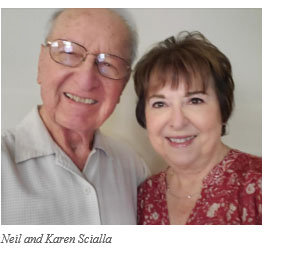 Neil Scialla of Chino Hills, CA, an Army vet and retired General Electric worker, was treated with proton therapy for his prostate cancer in 2003 at LLUCC. He’s now 88 and his health is good. “I’m free of cancer and I’ve had no negative reaction to my proton treatment,” Neil told us.
Neil Scialla of Chino Hills, CA, an Army vet and retired General Electric worker, was treated with proton therapy for his prostate cancer in 2003 at LLUCC. He’s now 88 and his health is good. “I’m free of cancer and I’ve had no negative reaction to my proton treatment,” Neil told us.
Neil has several close friends who’ve suffered greatly after prostatectomy. “The additional cost for their medical treatments has far exceeded the cost of my proton treatment,” he said.
Neil has sent at least six people to Loma Linda for proton treatment and they’re “all grateful” for his recommendation.
Though he’s recovering from spinal stenosis surgery, Neil is “trying to get back in condition to play golf once a week.” He also walks, rides a stationary bike, enjoys yard work, and helping his “wonderful wife” with housekeeping. The two also take a cruise every year and plan to continue the tradition for years to come.
“I love your monthly newsletters,” Neil said.
Chuck: Treated 14 years ago at age 78…
 Chuck Sampson was treated with proton therapy at LLUCC in 2005 at age 78. He’s now 92 and still rides a jet ski. “I haven’t had any prostate problems since I left Loma Linda,” Chuck said last month. “That’s why I’m still 100 percent pro-protons!”
Chuck Sampson was treated with proton therapy at LLUCC in 2005 at age 78. He’s now 92 and still rides a jet ski. “I haven’t had any prostate problems since I left Loma Linda,” Chuck said last month. “That’s why I’m still 100 percent pro-protons!”
Sadly, Chuck lost his wife, Hope, in 2010. “I’m still living alone in our home,” Chuck said. “I don’t need any help and I’m grateful.” Although Chuck admits he’s slowed down a bit—no more water skiing and roller blading—he still rides around on his Sea Doo at a nearby lake and “will continue as long as I’m able.”
Chuck’s son and son-in-law were treated with proton therapy a few years ago and both are doing well. “Obviously, proton is the only way to go,” Chuck said.
Chuck calls Bob Marckini “an inspiration.” His words below touched us deeply and we’re proud to share them with our readers:
I can’t thank you enough for all you’ve done to spread the proton word BIG TIME! You’ve blessed many men (significant others, too) for giving them hope and life. If it wasn’t for your tenacity, I’m convinced the number of proton facilities in the U.S. and around the world would’ve never been built. Thank God for Bob Marckini, his book, and the organization he created. I’ll continue to make your effective proton book available to as many as I can for as long as I live. God can use us all in unique ways if we’re willing. Thankfully, you were willing.
Learn more about Chuck on our “Life After Proton” page on our website.
Jerry: Treated 10 years ago at age 66…
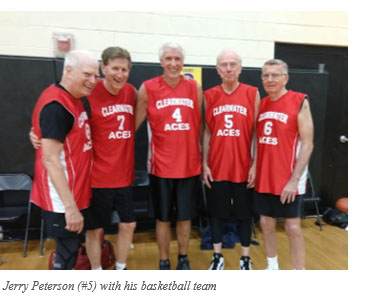 Jerry Peterson completed his proton treatment at UFHPTI in April 2009. He suffered no major side effects after treatment—only some intermittent rectal bleeding that dissipated on its own. “It was a minor inconvenience compared with the experience of friends who had surgery,” he said.
Jerry Peterson completed his proton treatment at UFHPTI in April 2009. He suffered no major side effects after treatment—only some intermittent rectal bleeding that dissipated on its own. “It was a minor inconvenience compared with the experience of friends who had surgery,” he said.
Following Jerry’s diagnosis, he ordered several books on prostate cancer treatment options from Amazon, one of which was Bob Marckini’s. “His book led me to proton treatment which I was not aware existed when I began doing my research,” Jerry told us. “I keep a supply of Bob’s book and give it to anyone I learn has been diagnosed. I’ve been able to steer many men to proton therapy, for which they are always extremely grateful.”
At 76, Jerry works full-time with his law firm, Butler Snow LLP, where he serves as bond counsel and underwriter’s counsel in tax-exempt financings. “I’ve had the privilege of being involved in the financing of the Emory Proton Center in Atlanta and the Provision Center in Nashville, both of which are completed and operating,” he said. “I’m currently working on a financing for a proton facility in the Northeast.”
Jerry and his wife, Molly, have three children, three grandchildren, and another due in a few weeks. Jerry, who’s been playing basketball for 60-plus years, recently participated in the 75+ age bracket in the three-on-three tournament that’s part of the National Senior Games held in Albuquerque. “I played with a team from Clearwater, FL because we were unable to find enough Georgia players to field a team.”

We’ve been producing BOB Tales newsletters monthly for almost 19 years. During this time there have been articles that many new members haven’t seen, and some older members may have forgotten. So, we periodically re-run some articles from past newsletters. This one is from April 2005, 14 years ago …
You Can Save Lives
A surprisingly small percentage of men have annual physicals. As a result, they’re not paying enough attention to their PSA. Last month, we received a call from a gentleman in California who had his first physical in five years. His PSA was 183 and his Gleason score was 8. He was diagnosed with prostate cancer and his bone scan was positive. He wanted to know if he was a candidate for proton therapy. We told him we didn’t think so, because his cancer wasn’t localized. We encouraged him to contact the referral office at LLUCC. The man is 56 years old, and his future isn’t very bright.
It’s troublesome that so many men are still not having annual physicals, DREs, and PSA measurements. We all know this cancer can be successfully treated if caught early.
When Bob Marckini and his wife Pauline were recently checking their bags at the curb in Tampa, FL while on vacation, they stood next to a skycap who was about 50 years old. In casual conversation, Bob brought up the BOB organization and prostate cancer (as he does often) and asked him if he knew his PSA. The gentleman answered, “I had a physical about four years ago and I think it was okay.” Bob replied, “You really need to have annual physicals. I’m a prostate cancer survivor. Do you know that one out of six men will be diagnosed with prostate cancer?” The skycap said, “No.” Bob then told him about the importance of having annual physicals, a PSA test, and a DRE.
Bob rarely misses an opportunity to remind men they need to take responsibility for their health, especially when it comes to preventing prostate cancer. We have almost 2,000 members (in 2005). Imagine the impact we could have if each of us spoke with one guy every week? That’s 104,000 men. So, what are you waiting for?
5 Foods that Help Fight Prostate Cancer
Turmeric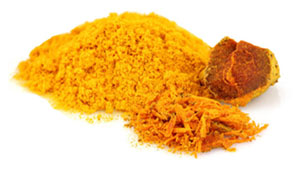
This yellowish spice and its extract, curcumin, may have anti-inflammatory properties. Studies show that curcumin disrupts
how prostate cancer cells metabolize.
Watermelon
Watermelon is an excellent source of the carotenoid lycopene. Studies suggest that lycopene may help protect against the development of prostate cancer.
Artichoke hearts
Artichoke hearts contain the antioxidant, ferulic acid, which may reduce the growth of prostate cancer cells. A recent Italian study determined that a diet rich in ferulic and caffeic acid may lower your risk of developing prostate cancer.
Carrots
In a recent Vietnamese study, men who ate the most carrots were 65 percent less likely to develop prostate cancer than men who ate the least. The carotene in carrots may be more “bioavailable” than it is in other foods. That means your body is better able to absorb the nutrient.
Sardines
Cold-water fish like sardines have omega-3 fatty acids, which may improve the health of prostate cells. As mentioned earlier in our “In the News” section, fish is a key player in the Mediterranean Diet.
New Research Provides Insight into Why Broccoli Reduces Prostate Cancer Risk
A new study has found eating one or more portions of broccoli every week can reduce the risk of prostate cancer, and the risk of localized cancer becoming more aggressive. And, researchers can now explain why.
For this study, men who were at risk of developing prostate cancer ate either 400g of broccoli or 400g of peas per week in addition to their normal diet over 12 months. Researchers analyzed tissue samples taken from the mens’ prostate gland before the start of the trial and after six and 12 months. They also measured gene expression.
Results showed there were more changes in gene expression in men who were on the broccoli-rich diet than on the pea diet. These changes may be associated with the reduction in the risk of developing cancer that’s been reported in epidemiological studies.
Other studies have suggested that the 50 percent of the population who have a GSTM1 gene gain more benefit from eating broccoli than those who lack this gene. The study showed that the presence of the GSTM1 gene had a profound effect on the changes in gene expression caused by eating broccoli.
Contact with Nature Quickly Reduces Stress
Just 20 minutes spent sitting or strolling in a place that lets people feel more closely connected with nature significantly reduces the body’s production of the stress hormone cortisol. Regular contact with natural surroundings can be a low-cost solution to the stress-inducing effects of urbanization and indoor lifestyles filled with screen viewing. Time of day doesn’t matter, as long as nature exposure occurs during daylight hours.
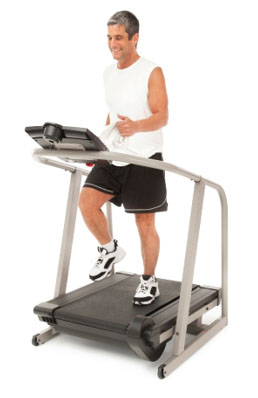 MaryCarol Hunter, PhD, associate professor, School for Environment and Sustainability, University of Michigan, was leader of this study which was published in Frontiers in Psychology.
MaryCarol Hunter, PhD, associate professor, School for Environment and Sustainability, University of Michigan, was leader of this study which was published in Frontiers in Psychology.
Exercise Helps Even Long-term Couch Potatoes
A study of 315,000 people by the National Institutes of Health-AARP Diet and Health, reported that people ages 40 to 61 who began exercising regularly after years of physical inactivity reduced their risk for death by 32 to 35 percent. Their odds of death from heart attack and cancer also dropped, compared with those who never exercised during the study period.
Bottom line: It’s never too late to reap the benefits of regular exercise. This study was reported in AARP Bulletin.

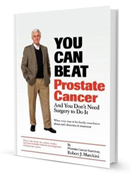
Reader Feedback
Here’s an email we recently received:
Bob’s book played a major role in my treatment decision-making process. I will be forever grateful to Bob for giving me confidence that proton therapy was the right thing to do.
One of the things I particularly loved about the book, also,
was how Bob’s proton experience at Loma Linda brought about a rather transformative change in him from a spiritual standpoint. It was inspiring to read his account on that aspect.
And I should say “we” instead of “I” as far as the decision-making process, as my wife was very much a partner in the whole process.
─Pat Jenkins, 63, Treated at UFHPTI in 2017
Recent Amazon Review
We read and appreciate every Amazon review. Here is a great one from July 30.
 A Must Read: I read Robert Marckini’s book cover to cover. It’s filled with information on all types of prostate cancer treatments, but its primary topic is proton radiation therapy. It’s a great resource for comparing the benefits and side effects for all of them. Robert definitely put a lot of time into his research. His writing style is easy to read, and he doesn’t burden the reader with all the technical stuff—just plain English. Thanks, Robert, for taking the time to write this book to get the word out.
A Must Read: I read Robert Marckini’s book cover to cover. It’s filled with information on all types of prostate cancer treatments, but its primary topic is proton radiation therapy. It’s a great resource for comparing the benefits and side effects for all of them. Robert definitely put a lot of time into his research. His writing style is easy to read, and he doesn’t burden the reader with all the technical stuff—just plain English. Thanks, Robert, for taking the time to write this book to get the word out.
Buy Bob's book online, in bulk, or in Spanish.
Online: Paperback: $19.00--•--Kindle: $7.99--•--NOOK Book: $9.99--•--Apple iBook: $9.99
In Bulk: Conctact us for a discount price list. Proceeds from book sales support proton therapy research through the Robert J. Marckini Endowed Chair at LLUCC.
In Spanish: Buy the print version or in eBook format.
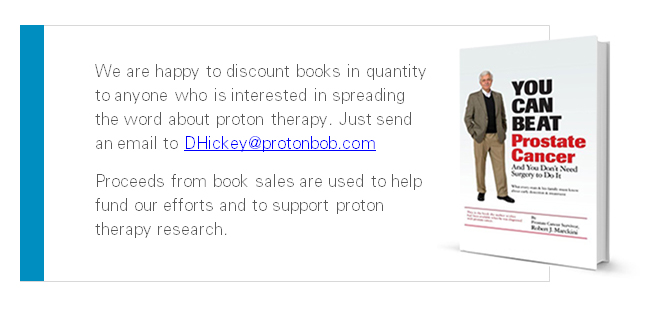

Can You Read This? (Source)
We’ve seen this with the letters out of order, but this is the first time we’ve seen it with numbers. Your ability to read the message below reveals something fascinating about the human mind. The second message, written as scrambled letters, suggests that only “strong minds” can read it. The fact is just about everyone can read it. It’s still amazing though.
According to Jon Andoni Duñabeitia, who is part of a team of cognitive scientists who wrote five papers on the subject, interpreting passages like this barely activates the section of the brain associated with numbers. Rather, our brain treats the numbers as letters based on their similar appearance.
Some believe that if you can read this out loud you have a strong mind. And better than that—Alzheimer’s is a long, long, way down the road before it ever gets anywhere near you! Hint: Rather than studying every word, scan the paragraphs below quickly and see if all the words come to you.
Give it a try …
7H15 M3554G3 53RV35 7O PR0V3 H0W 0UR M1ND5 C4N D0 4M4Z1NG
H1NG5! 1MPR3551V3 7H1NG5! 1N 7H3 B3G1NN1NG 17 WA5 H4RD BU7
N0W, 0N 7H15 LIN3 Y0UR M1ND 1S R34D1NG 17 4U70M471C4LLY
W17H0U7 3V3N 7H1NK1NG 4B0U7 17, B3 PROUD! 0NLY C3R741N
P30PL3 C4N R3AD 7H15!
The following message has scrambled letters only. This is known as “leet speak.” Younger people who’ve had computers throughout their lives with endless typographical choices may find it second nature. Alternatively, an older person who is more familiar with standardized cursive writing, could have more trouble deciphering the message.
If you can raed this, you have a sgtrane mnid. Can you raed this? Olny 55 people out of 100 can.
I cdnuolt blveiee that I cluod aulaclty uesdnatnrd what I was rdanieg. The phaonmneal pweor of the hmuan mnid, aoccdrnig to a rscheearch at Cmabrigde Uinervtisy, it dseno't mtaetr in what oerdr the ltteres in a word are, the olny iproamtnt tihng is that the frsit and last ltteer be in the rghit pclae. The rset can be a taotl mses and you can still raed it whotuit a pboerlm. This is bcuseae the huamn mnid deos not raed ervey lteter by istlef, but the word as a wlohe. Azanmig huh? Yaeh and I awlyas tghuhot slpeling was ipmorantt!
Estate Planning Hints
BOB Member Ron Hendricks is Director, US Foundation for Trinity Western University. He regularly copies us on his “News from Ron” mailings, which are helpful hints on estate planning to the readers of his newsletters. We’ve found Ron’s suggestions timely and beneficial. With his permission we periodically share some of his wisdom with our membership. This segment is called …
9 Reasons Why My Will or Trust No Longer Applies
- Your executor or trustee isn’t available: Your prior selected person may have passed away or not have the mental capacity to execute your estate.
- Children, grandchildren or other heirs: If you have a specific transfer to one child, a new child may receive a smaller than intended inheritance.
- Sale or purchase of an asset: A business or asset may be transferred to one of your heirs. If that property changes in value, your entire plan could change.
- Your selected beneficiary is deceased: It’s useful to revise the plan and select a new recipient of that share of your estate.
- Move to a different state: Some states are called “common law” property states and others are called “community property.” Clarify the ownership of property as separate of joint property.
- Divorce, remarriage or death of spouse: Your plan and beneficiary designations should always be reviewed in the event of a change of marriage status.
- Adding a major property to a living trust: The addition of a high-value-asset to the living trust could increase the benefits for the persons receiving shares from the trust in comparison to the rest of your heirs.
- Your church or other charities may have changed.
- Passage of time: Changes in family, federal or state law, or family structure.

Last Month’s Brain Teaser
If you were to spell out numbers, how far would you have to go until you would find the letter “A?”
Answer: One thousand.
Winner: Jim Akin, formerly of Vail, CO, living in Bradenton, FL, is last month’s brain teaser winner. “I exchanged snow for sand,” Jim told us. Jim was treated at LLUCC in 2005 and he’s been a “big supporter” of proton therapy ever since. “Over the years I can’t tell you how many I’ve told about my 10-week ‘radiation vacation’ in Loma Linda,” Jim said. “What a difference that program has made in my life!” Jim is 78 and in “perfect health.” He told us he thinks he has a shot at 100.
“I so enjoy your newsletter and read every copy cover to cover,” Jim said. “Please keep the good news coming. Bob Marckini and I are getting up there and it’s good that a younger person like Deb will be around long after us to keep this wonderful ministry going.”
Here are some other brain teaser answers that caught our attention last month:
“Cuatro.” Pretty smart. Maybe we should have mentioned the BOB is English-speaking only.
“One hundred and one.” Perhaps this member is smarter than all of us.
“One Tausend Euros.” This member is from Germany. Essentially, he’s correct as 1,000 is the answer in both English and German. But again, English only.
On another note, last month was the first time Bob Marckini’s wife, Pauline, submitted an answer to the brain teaser. She was correct, by the way, however she was not the winner. We don’t play favorites at the BOB.
New Brain Teaser
What one word can be added to the ends of the following words to form new words: a, for, in, on, out, to, up?
Send your answer to [email protected] for a chance to win a signed copy of Bob Marckini’s book, You Can Beat Prostate Cancer.
Only a Grandmother Would Know
One day while my grandmother was out, my grandpa was in charge of me. I was about 2 ½ years old at the time. Someone had recently given me a little tea set as a gift. It was one of my favorite toys.
That afternoon, grandpa was in the living room engrossed in the evening news when I brought him a little cup of “tea (which was actually water).” After several cups and lots of praise for such “yummy tea,” my grandmother came home.
Smiling, my grandpa asked her to wait in the living room to watch me bring him another cup of tea because it was “just the cutest thing.”
Grandmother waited, and sure enough, in a minute I came down the hall with a cup of tea for grandpa … and she watched him drink it up.
Then she said, “Did it ever occur to you that the only place she can reach to get water is the toilet?”
Context is Important
Wife texts husband on a cold winter’s morning: “Windows frozen, won’t open.”
Husband texts back: “Gently pour some lukewarm water over it.”
Wife texts back five minutes later: “Computer really screwed up now.”
Teaching Courtesy
Teach a child to be polite and courteous in the home, and when he grows up, he'll never be able to merge his car onto the freeway.
Turns Out I’m Smarter
My friend thinks he’s smart. He told me an onion is the only food that makes you cry, so I threw a coconut at his face.
Quote of the Month:
“90 percent of baseball is mental; the other half is physical.” ─Yogi Berra-isms

How Many Other Things are We Missing?
In 2007, a man sat at a metro station in Washington, DC and started to play the violin; it was a cold January morning. He played six Bach pieces for about 45 minutes. During that time, since it was rush hour, 1,097 people witnessed his performance.
After the first three minutes went by a middle-aged man noticed there was a musician playing. He slowed his pace and stopped for a few seconds and then hurried up to meet his schedule. A minute later, the violinist received his first dollar tip: a woman threw the money in the till without stopping. A few minutes later, a young man leaned against the wall for a few seconds to listen, then looked at his watch and started to walk again. Clearly, he was in a hurry.
The one who paid the most attention was a 3-year-old boy. His mother attempted to drag him along, but he wanted to stay and listen. Finally, the mother tugged hard and the child continued to walk, turning his head all the time to watch the violinist. This action was repeated by several other children. All the parents, without exception, forced them to move on.
In the 45 minutes the musician played, only seven people stopped and stayed for a while. That’s seven out of 1,097. Who stopped more than most? The children. About 20 people gave him money, but continued to walk their normal pace. He collected $32.17. When he finished playing and silence took over, no one noticed. No one applauded, nor was there any recognition.
No one knew this, but the violinist was Joshua Bell, one of the finest musicians in the world. He played one of the most intricate pieces ever written on a 300-year-old violin worth $3.5 million. Two days before his playing in the subway, Joshua Bell sold out at a theater in Boston and the seats averaged $100 each.
This is a real story. Joshua Bell playing incognito in the metro station was organized by the Washington Post as part of a social experiment about perception, taste, and priorities of people. The outlines were: In a commonplace environment at an inappropriate hour, do we perceive beauty? Do we stop to appreciate it? Do we recognize talent in an unexpected context?
One of the possible conclusions from this experience could be: If we don’t have a moment to stop and listen to one of the finest musicians in the world playing the best music ever written, how many other things are we missing? Remember, we are surrounded by beauty. Like the children, let’s remember to pay attention and to appreciate the talent and beauty that are all around us.
Watch part of Joshua Bell’s performance at Union Station in Washington, DC on Jan. 12, 2007 here.
Low PSAs to all,
Bob Marckini and Deb Hickey
To print the BOB Tales newsletter or view the newsletter with a larger font size, click here for the PDF file.
NO MEDICAL ADVICE: Material appearing here represents opinions offered by non-medically-trained laypersons. Comments shown here should NEVER be interpreted as specific medical advice and must be used only as background information when consulting with a qualified medical professional.
